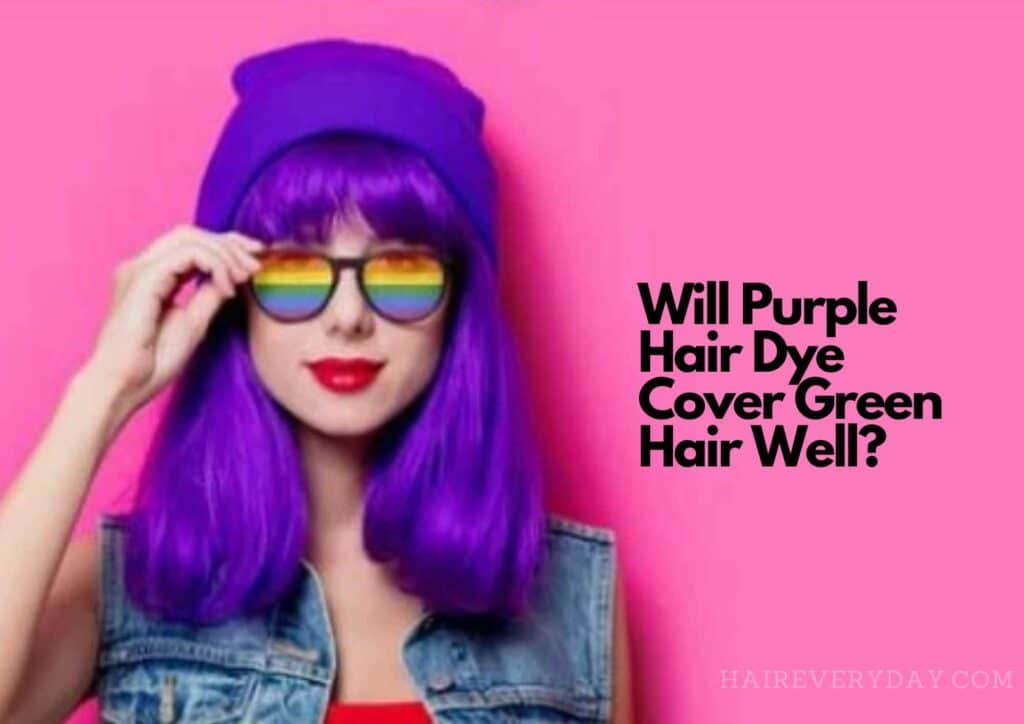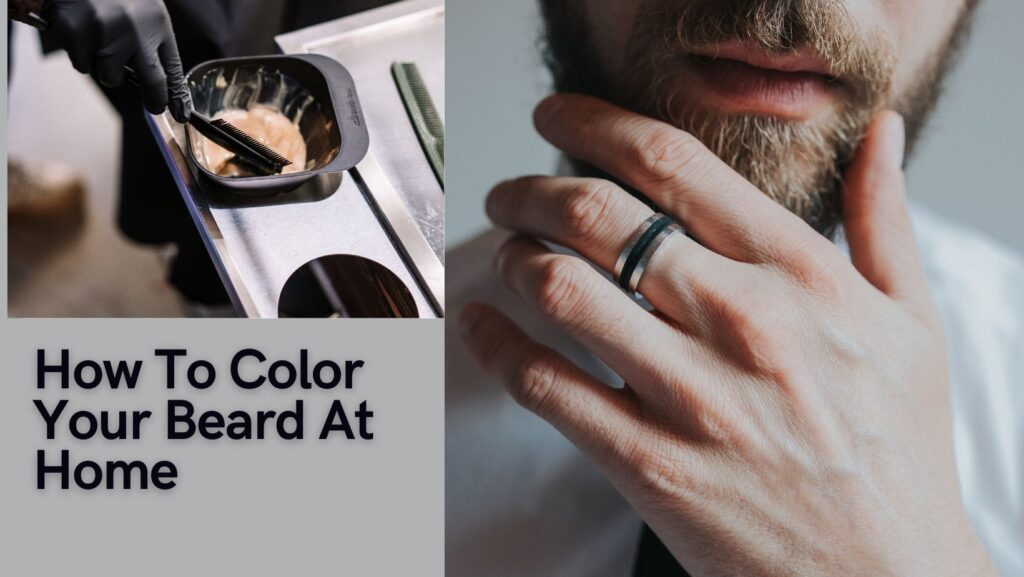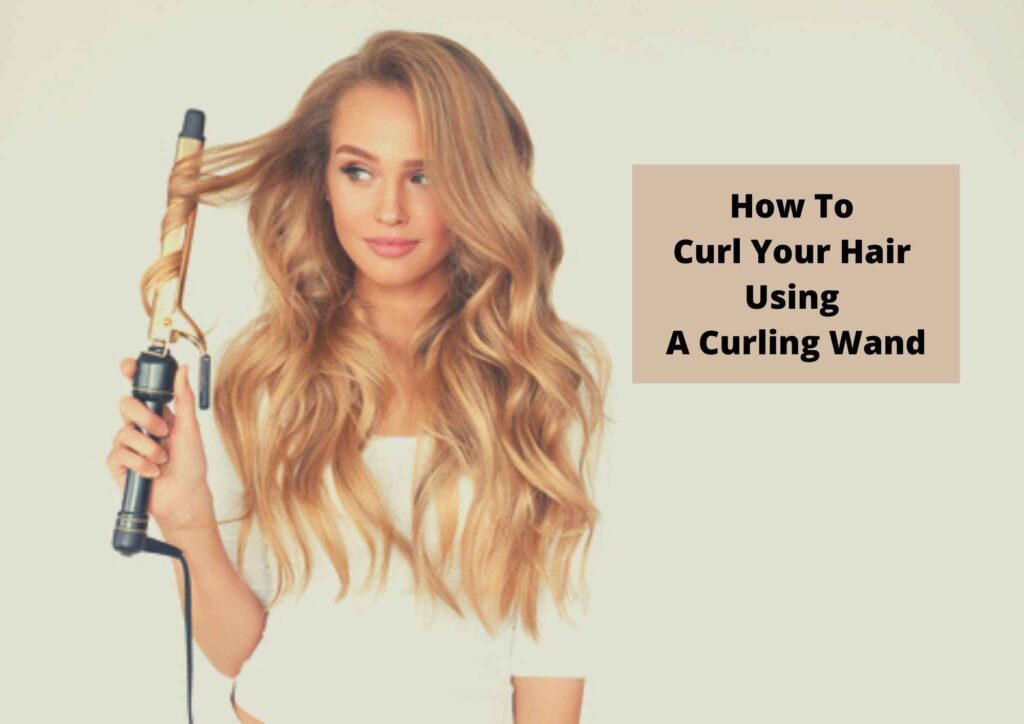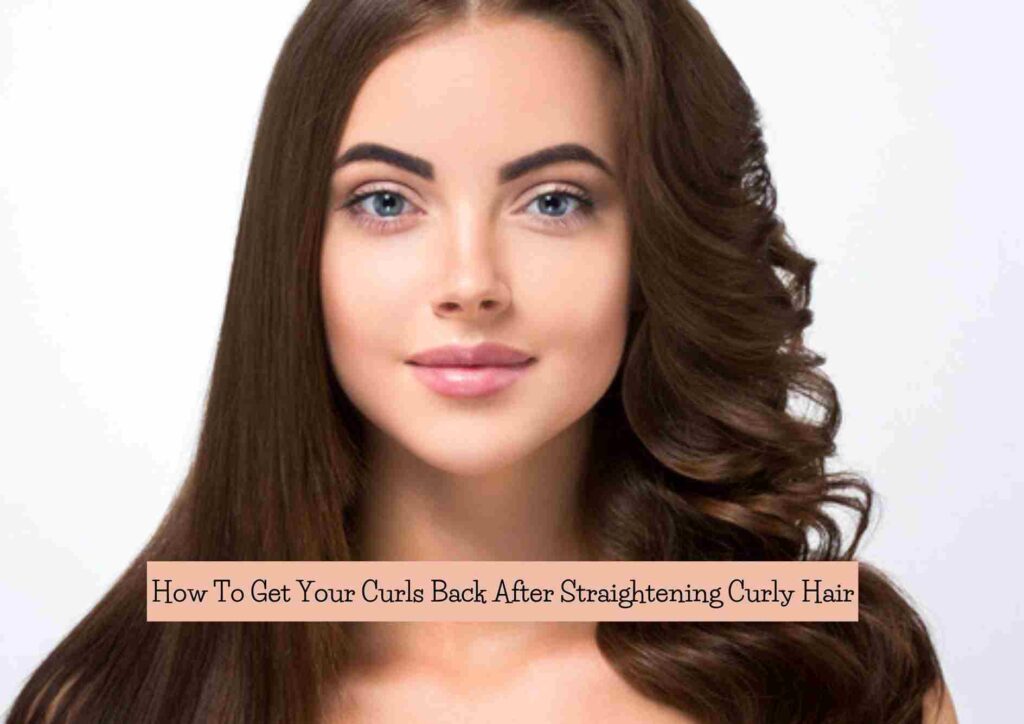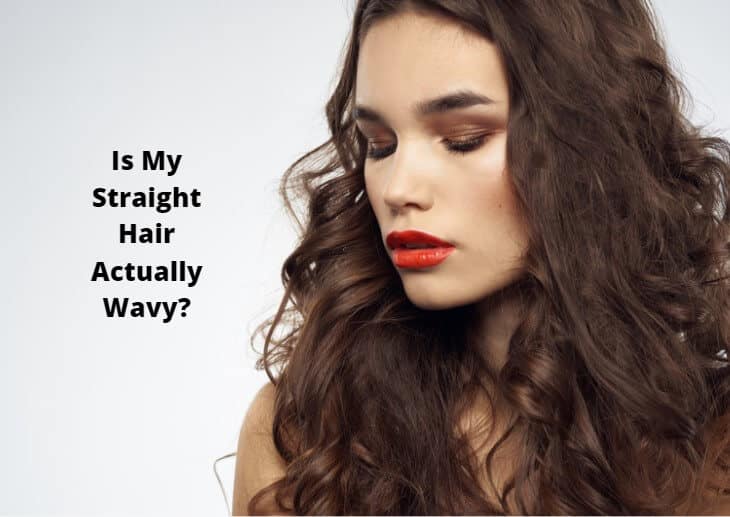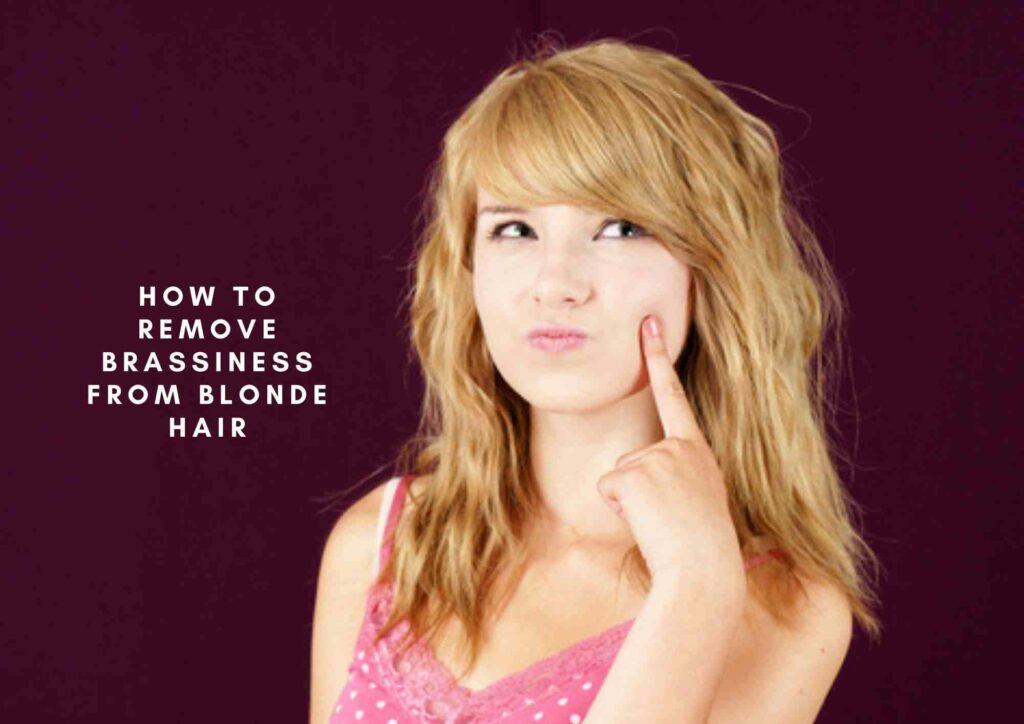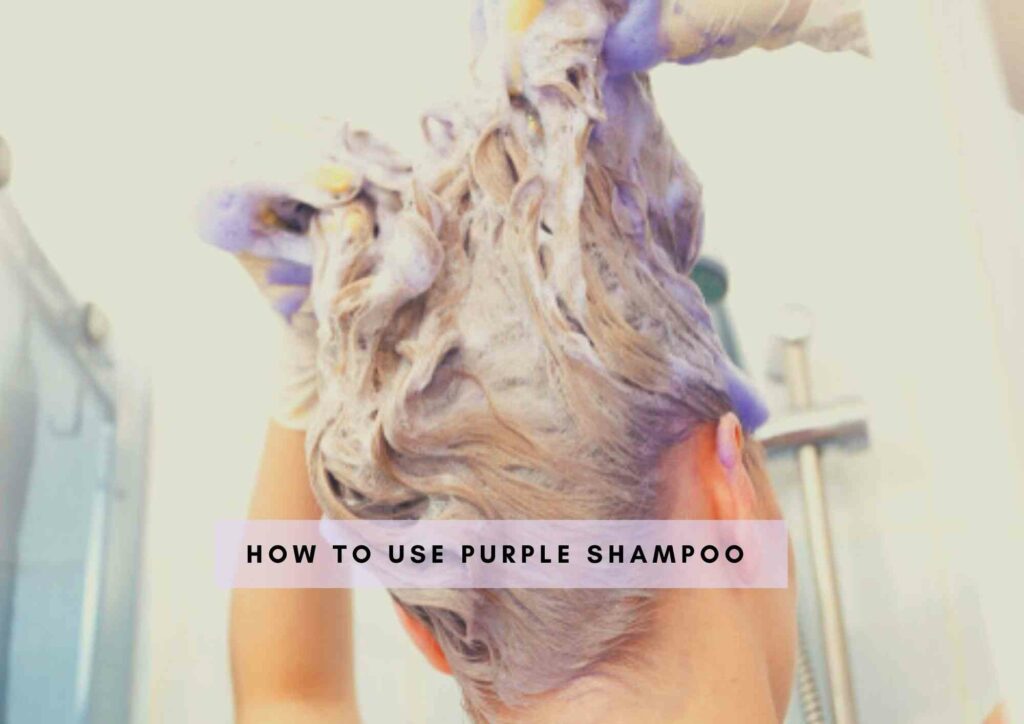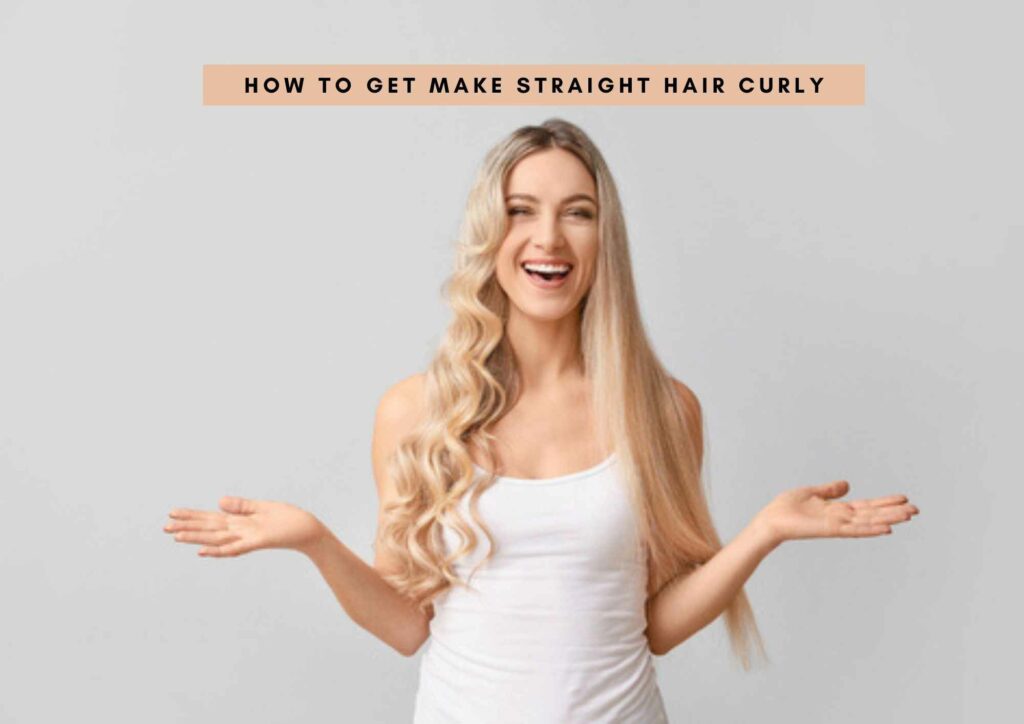What happens if you put purple dye over green hair? Find if the purple cancels green tones your hair and how to properly color your green hair over.
Are you looking to transform your green-tinted tresses into a vibrant shade of purple? Navigating the color wheel to achieve your desired hair color can be tricky, but it’s not impossible.
Whether you’re dealing with a faded green or a bold emerald, our comprehensive guide at HairEveryday will walk you through the process of applying purple dye over green hair.
Discover expert tips, essential considerations, and the best practices to ensure your new purple locks are as vivid and flawless as you envision. Say goodbye to unwanted green and hello to a beautiful, bold purple with our expert advice at HairEveryday.com.
What Happens If You Put Purple Dye Over Green Hair?
Putting purple dye over green hair can result in a muddy or brownish color because purple and green are complementary colors on the color wheel, which means they can neutralize each other when mixed. The final result depends on the shade and intensity of the green base and the type of purple dye used. If the green is light and faded, the purple might cover it better, potentially resulting in a more muted purple hue. For a vibrant outcome, it’s often recommended to remove or neutralize the green before applying a new color.
What Happens If You Put Purple Dye Over Green Hair
Purple is a secondary color that is a combination of red and blue which are primary colors (shades that exist in nature on their own and aren’t a combination of other colors).
The shade of purple you’re getting (lavender, mauve, wine, aubergine, etc.) will depend on the ratio of red and blue used to get the purple shade.
Now a lot of people know that putting purple color over yellow blonde hair will cancel out the yellowness, which is why yellow shampoos are so popular. Yellow and purple are on the opposite ends of the color wheel which indicates that they cancel each other out!
But what about the color green?
Well, green (just like purple) is another secondary color. It is created by mixing blue and yellow together. So theoretically, using purple dye over green hair will remove the yellow tints from your hair, leaving it blue.
However, in reality it can be more complicated than this.
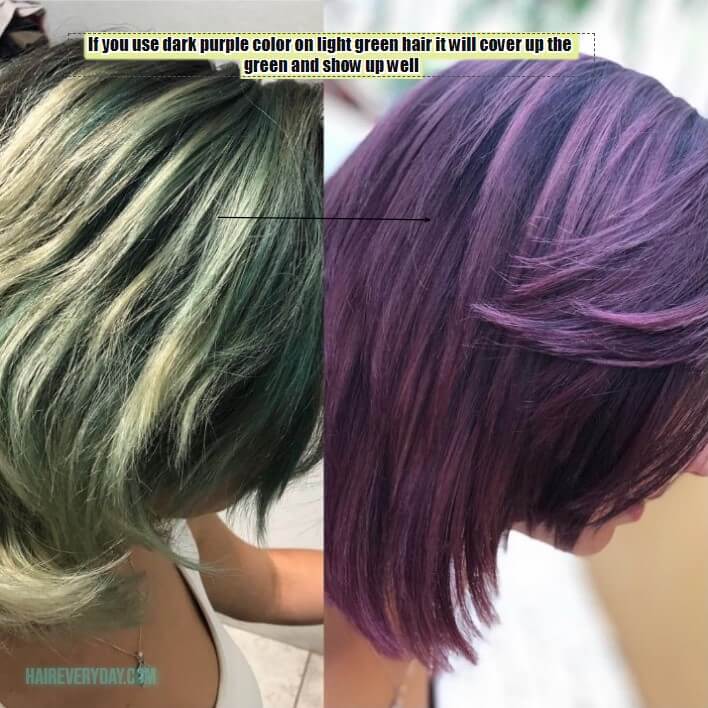
What color your green hair ends up after you put purple dye over it depends on:
- The shade of green that forms the base color of your hair
- The shade of purple you’re going to apply on your hair
- If you’re using a developer along with the hair dye
- The strength of the developer you’re using.
This is because,
If you’re using a light purple dye (such as lavender) over green hair, the green undertones might overpower the purple and you’ll end up with a greenish-blue color.
If you’re using a dark purple color (like aubergine, plum, wine, etc.) then the color pigments in the dye might be strong enough to cover the green completely and only after a few washes will it turn bluish-green.
If you’re using a lighter purple shade and are using a developer, the hydrogen peroxide in the developer can remove the existing green color by opening your cuticles and can make hair the shade of lavender you want, despite the base color.
Also, if the developer happens to be a strong one, (such as a volume 30 or 40 developer) then it removes dye and lightens your hair, making the application of dye easier. However, this can be too harsh on hair.
Will Using Purple Dye Tone Green Hair
No it will not. Purple color will cancel out yellow not green. So if you want to remove the yellowness from your grey or white-blonde hair a purple shampoo or toner will be good for the job.
But even then, a purple dye will never “tone” your hair, it will, as a dye does, color your hair instead. There are specific shampoos and hair masks that contain some amount of purple pigment that are specially formulated for this job.
If you want to “tone” green hair. That is, if you want to remove green tints or hair dye from bleached hair, you need to use a red shampoo.
There are several different ones, my favorite being the Joico Color Infuse Red Shampoo that will help remove the green by depositing red pigments over it, canceling out the color.
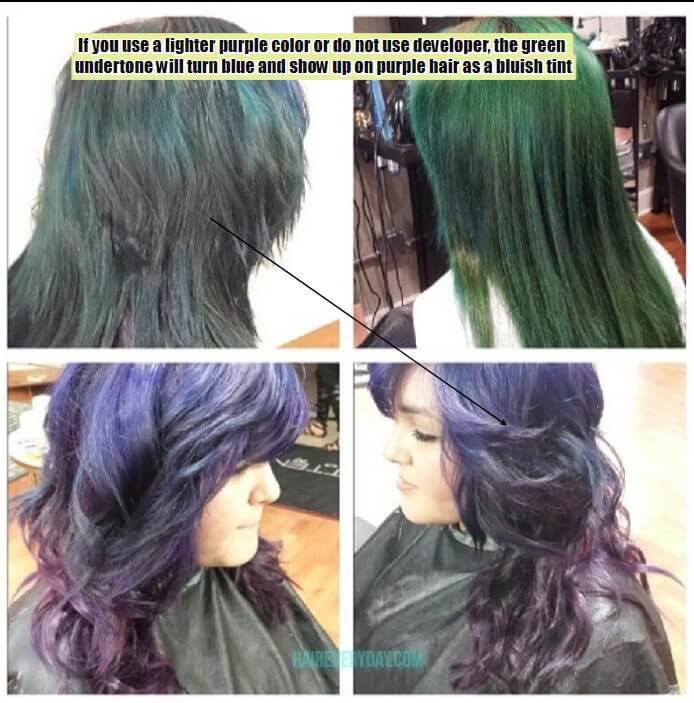
- Related: What Color Will Cover The Green Hair Dye
- Related: What To Do When Bleached Hair Turns Green
- Related: Can Purple Shampoo Work For Green Pool Hair
Can You But Blue Dye Over Green Hair
Green, as I’ve explained before, is made up of blue and yellow, two primary colors. So using blue, which is essentially a parent color for green, will give better results than using purple.
But even here, if you’re using a strong shade of blue (like electric blue, navy blue, midnight blue, etc.) over a lighter shade of green than you can easily dye over green hair.
However, if your existing hair is a strong, bright emerald green, or forest green or other such dark colors than the blue dye won’t take, especially if you’re going for a blue that is lighter.
Your only choice in this case is to completely remove the dark green hair dye or at least bring it to a level of lightness which will make it easier for the blue to cover it.
Some hair colors, especially those temporary, direct deposit dyes, can go away in just 1-2 washes if you use a strong, sulfate-based clarifying shampoo.
However, if you have used a semi-permanent or permanent shade of green, you might need to use a chemical hair color remover to strip the hair dye first before using the blue dye over it.
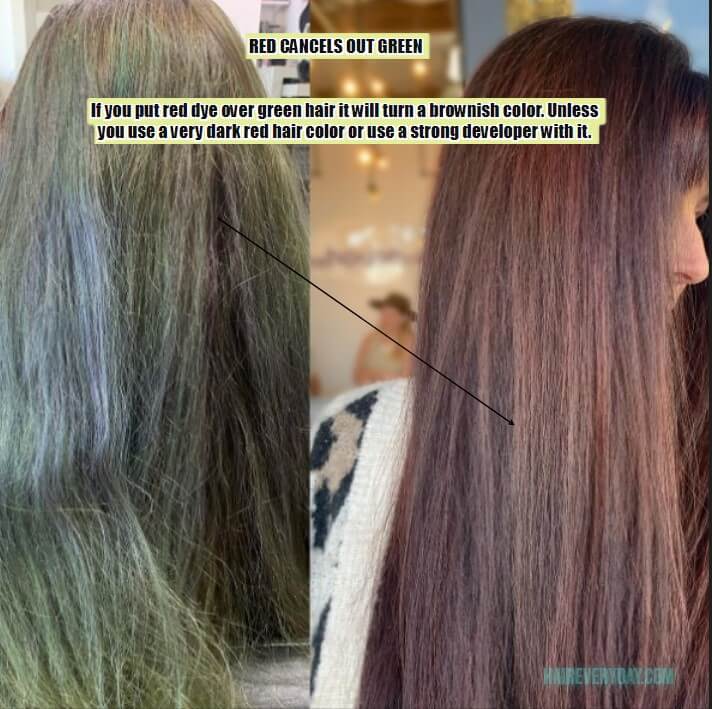
Can You Put Red Dye Over Green Hair
Yes, you can put red dye over green hair. But it might not yield the results you want. You see, red and green are opposite to each other in the color wheel, this makes them complementary colors.
In layman’s terms, red and green cancel each other out.
So if you’re using a red dye over green hair you better hope it’s a strong dye or else you might just end up with your bleached hair as a base again.
There are, in fact, several “red shampoos” available that are created with red pigments specifically for the purpose of removing green tints from bleached hair.
If you’re planning on using a color depositing or temporary hair dye over green hair, I’d suggest using one that is darker (like scarlett, ruby red, etc.) instead of ginger.
And if you’re using a semi permanent or permanent hair dye, be sure to use a medium-strong developer that will help remove some of the green pigments and help the red penetrate your hair strands better.
Better yet, you can use a strong shampoo or hair color remover to at least fade your green hair dye to a manageable, lighter shade.
What Colors Can Dye Over Green Hair Dye?
I strongly suggest using a hair color remover to strip green dye completely or at least fade it before applying any other color. If you’re worried about using chemical removers than you can even try natural methods like apple cider vinegar rinses, lemon juice, etc.
But one of the cardinal rules of hair coloring is to start off with the right base color.
In case, you cannot completely remove your green hair dye, you can use darker colors to cover it over.
Any dark brown and black shade will completely cover the green.
However, if you want a different color go for blue especially darker shades as it can dye over green hair dye well. Purple also does this provided you choose a darker shade of the color.
I wouldn’t recommend using red dye without stripping the green first as the red will just cancel out the green and might not show up well. But if you still want to use red dye over green hair, you should at least use a developer with dark red hair dye.
Why You Should Trust Haireveryday?
The author of this article, Leah Marie Priest has a degree in Cosmetology with years of experience in dealing with hair care, scalp care, and hairstyling. As someone who extensively deals with all kinds of hair textures, products, styling methods and more, hair Leah Marie knows what kind of products and procedures suit each hair type and person. We have also tested these hair products and processes ourselves to provide you an unbiased review about every product. Each of our articles are also reviewed by a team of medical professionals so that you get the most accurate and expert-reviewed information.
Conclusion
So to quickly summarize, if you put purple dye over green hair, then the hair will either take up the purple color and completely cover the green. Or it might leave behind a bluish-purple color instead of the shade you wanted.
And what outcome you get depends on the base shade of green, the shade of purple dye you’re planning to use and whether or not you’re using a developer.
A developer (which is basically a lightening agent containing hydrogen peroxide) will remove the base green shade and help deposit the new purple color better.
If you’re planning to “tone” your green hair or in simpler terms, wanting to remove the green tints from bleached hair, then using a red shampoo or color depositing dye is better than using purple.
Red cancels out green according to the color chart and not purple.
With all things said, if you have previously bleached your hair, colored it green and are again planning to color it purple, I strongly recommend going to a hairstylist to get the job done to prevent hair damage.
Also Read:
What Does Purple Hair Look Like Faded
Mint Green Hair For Black Girl
Emerald Green And Black Hair Ideas
To Summarize

